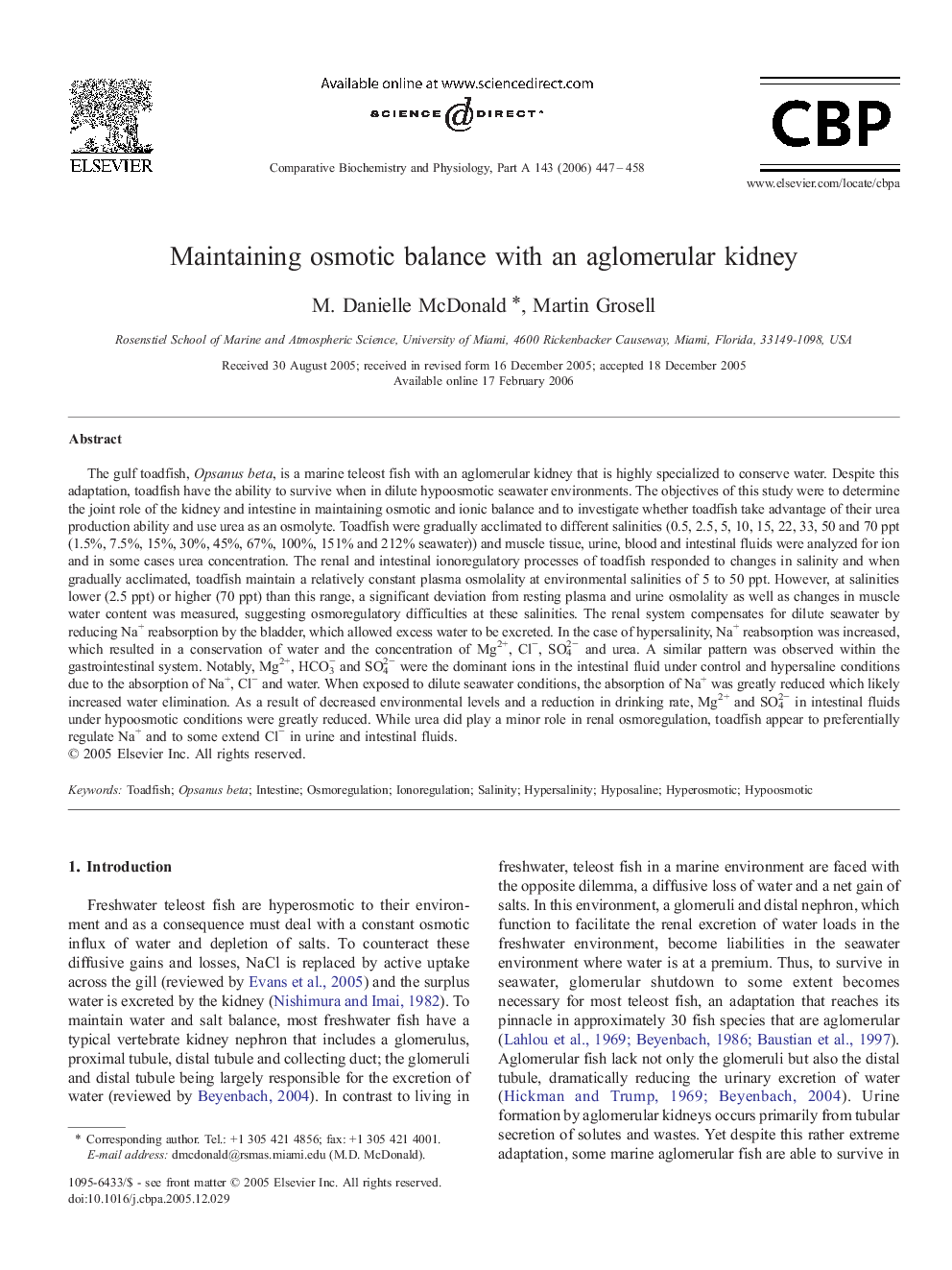| کد مقاله | کد نشریه | سال انتشار | مقاله انگلیسی | نسخه تمام متن |
|---|---|---|---|---|
| 1974940 | 1060405 | 2006 | 12 صفحه PDF | دانلود رایگان |

The gulf toadfish, Opsanus beta, is a marine teleost fish with an aglomerular kidney that is highly specialized to conserve water. Despite this adaptation, toadfish have the ability to survive when in dilute hypoosmotic seawater environments. The objectives of this study were to determine the joint role of the kidney and intestine in maintaining osmotic and ionic balance and to investigate whether toadfish take advantage of their urea production ability and use urea as an osmolyte. Toadfish were gradually acclimated to different salinities (0.5, 2.5, 5, 10, 15, 22, 33, 50 and 70 ppt (1.5%, 7.5%, 15%, 30%, 45%, 67%, 100%, 151% and 212% seawater)) and muscle tissue, urine, blood and intestinal fluids were analyzed for ion and in some cases urea concentration. The renal and intestinal ionoregulatory processes of toadfish responded to changes in salinity and when gradually acclimated, toadfish maintain a relatively constant plasma osmolality at environmental salinities of 5 to 50 ppt. However, at salinities lower (2.5 ppt) or higher (70 ppt) than this range, a significant deviation from resting plasma and urine osmolality as well as changes in muscle water content was measured, suggesting osmoregulatory difficulties at these salinities. The renal system compensates for dilute seawater by reducing Na+ reabsorption by the bladder, which allowed excess water to be excreted. In the case of hypersalinity, Na+ reabsorption was increased, which resulted in a conservation of water and the concentration of Mg2+, Cl−, SO42− and urea. A similar pattern was observed within the gastrointestinal system. Notably, Mg2+, HCO3− and SO42− were the dominant ions in the intestinal fluid under control and hypersaline conditions due to the absorption of Na+, Cl− and water. When exposed to dilute seawater conditions, the absorption of Na+ was greatly reduced which likely increased water elimination. As a result of decreased environmental levels and a reduction in drinking rate, Mg2+ and SO42− in intestinal fluids under hypoosmotic conditions were greatly reduced. While urea did play a minor role in renal osmoregulation, toadfish appear to preferentially regulate Na+ and to some extend Cl− in urine and intestinal fluids.
Journal: Comparative Biochemistry and Physiology Part A: Molecular & Integrative Physiology - Volume 143, Issue 4, April 2006, Pages 447–458